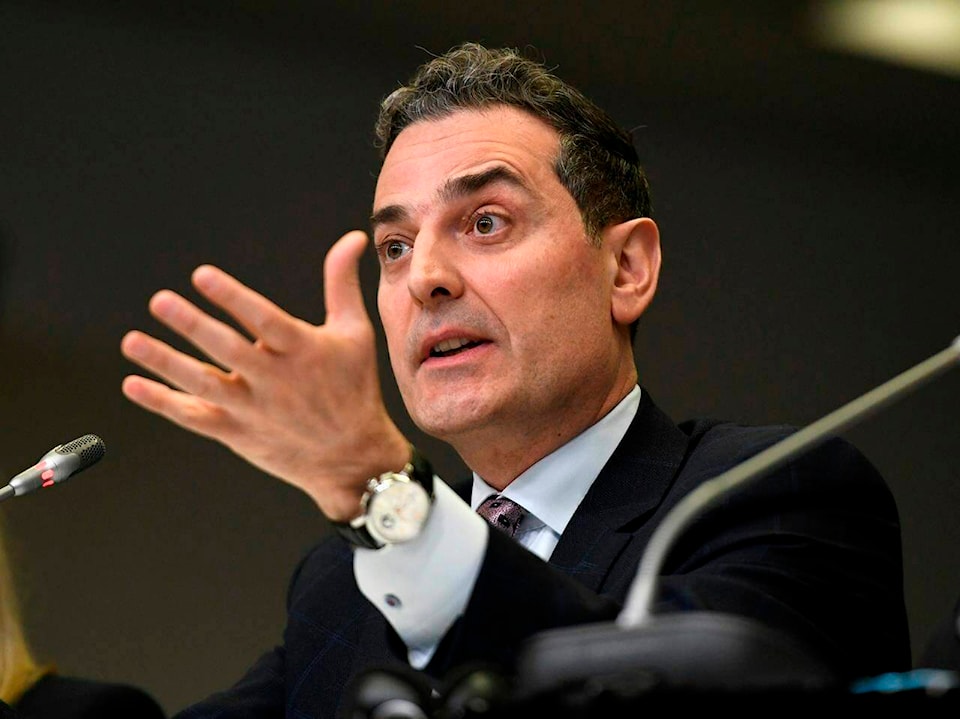TORONTO — BCE Inc. says it’s spending heavily on infrastructure to meet rising data demands as more customers switch to the 5G and fibre networks.
The higher capacity systems and plans are in turn leading to more revenue, said company chief executive Mirko Bibic on an earnings conference call Thursday.
“Customers using 5G handsets with 5G plans are definitely consuming significantly more data, and therefore, the monthly recurring revenue is higher from that base of customers.”
The company is expecting to see a similar trend as it continues to roll out its fibre network for wireline customers, he said.
“I have quite a bit of confidence that there will be significant demand for the higher speed tiers.”
Montreal-based BCE, along with its big telco competitors, have ramped up infrastructure spending in recent years with the company’s total peaking at about $5 billion this year before it starts to drop next year, said Bibic.
The company is aiming to reach up to 900,000 more homes and businesses this year with direct fibre connections as well as expand its 5G network. With the new networks in place, BCE will also look to saving on maintenance costs as it begins to decommission its copper wireline network in 2023 and beyond.
Looking further ahead, Bibic said it’s still just the beginning of understanding the potential of 5G networks.
“It will be a bit like 10, 15 years ago when we moved to 4G, and who would have foreseen at the very, very, very beginning the extent of the apps that would be unveiled for the consuming public to enjoy on their handsets, and I’m expecting the same kind of thing with 5G.”
Chief financial officer Glen LeBlanc said the company is seeing inflationary pressures, with fuel costs alone expected to be about $15 million to $20 million this year, but is still finding cost savings with wireline operating costs, for example, down 4.2 per cent from a year earlier.
“It’s really just blocking and tackling, being cost conscious as we always are trying to find improvements, reducing calls into our contact centres, doing a really good job with self-serve, and fibre is the gift that just keeps on giving. Everywhere we expand fibre, we have lower costs to operate.”
He said store traffic and consumer confidence seem to have remained strong in April, despite signs of economic headwinds.
The company is also feeling some pandemic and supply chain pressures, including in its wireline business segment where there was a 28.6 per cent decline in product revenues because of a lack of equipment availability.
“Omicron undoubtedly is causing some near-term disruption, notably for Bell Business Markets and media advertising,” said Bibic.
Overall the company said its profit attributable to common shareholders totalled $877 million or 96 cents per share for the quarter ended March 31, up from $642 million or 71 cents per share a year earlier.
Operating revenue totalled $5.85 billion, up from $5.71 billion in the first three months of 2021.
Wireless revenue rose to $2.21 billion compared with $2.1 billion a year ago, while wireline revenue slipped to $3.01 billion from $3.08 billion. Bell Media revenue totalled $825 million, up from $713 million in the same quarter last year.
On an adjusted basis, BCE said it earned 89 cents per share in its latest quarter, up from an adjusted profit of 78 cents per share a year earlier.
RBC analyst Drew McReynolds said in a note that the wireless performance was key to a positive quarter.
“Excluding one-time items, we view Q1/22 underlying results as slightly better than forecast driven by solid wireless results that balance growth and profitability.”
This report by The Canadian Press was first published May 5, 2022.
Companies in this story: (TSX:BCE)
The Canadian Press
